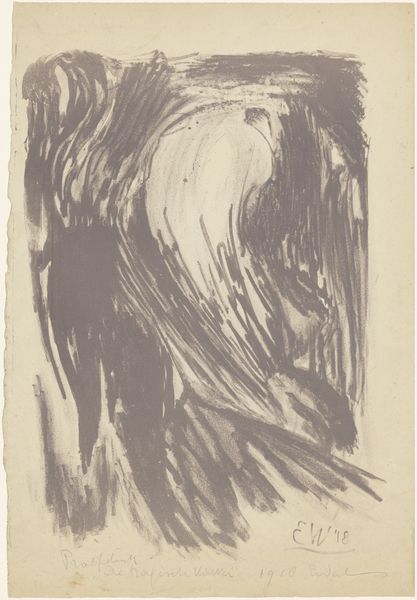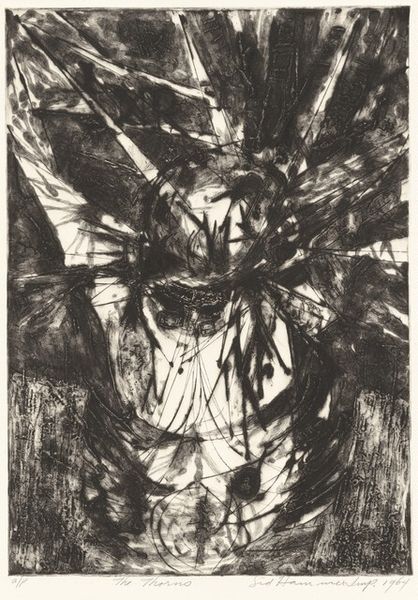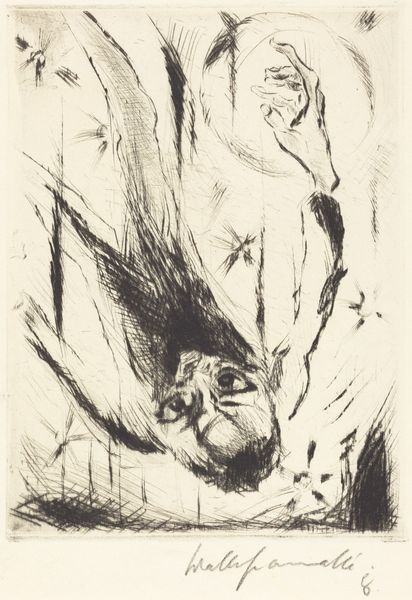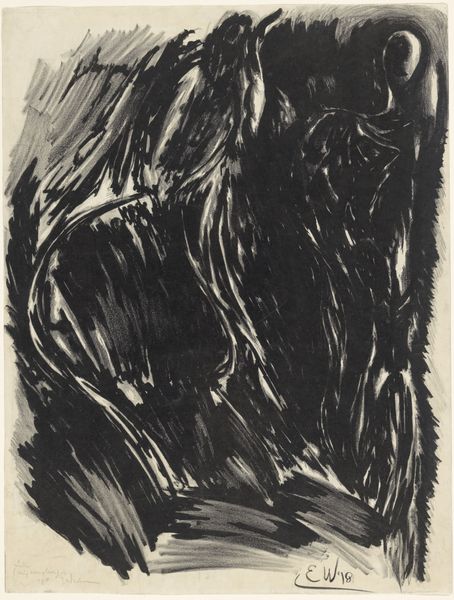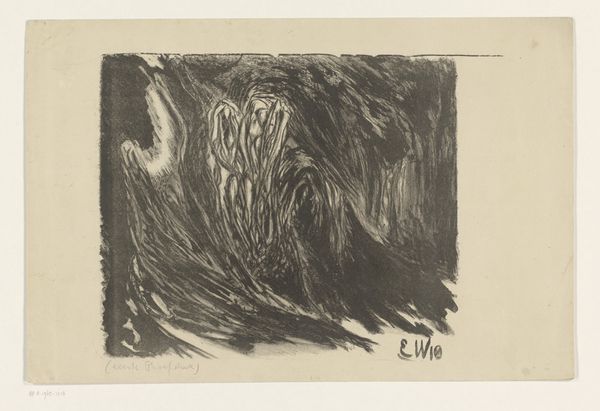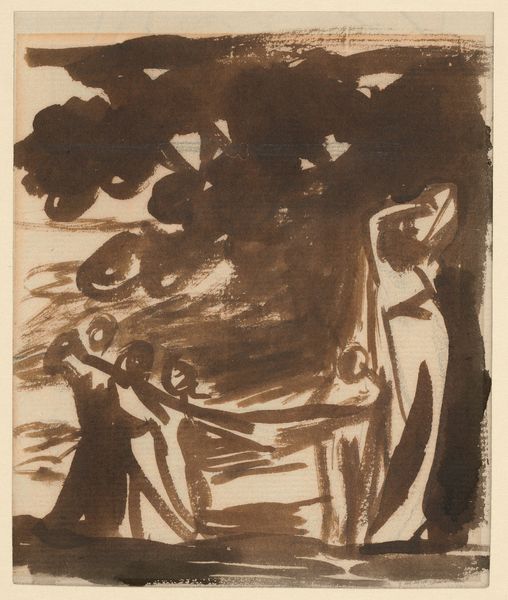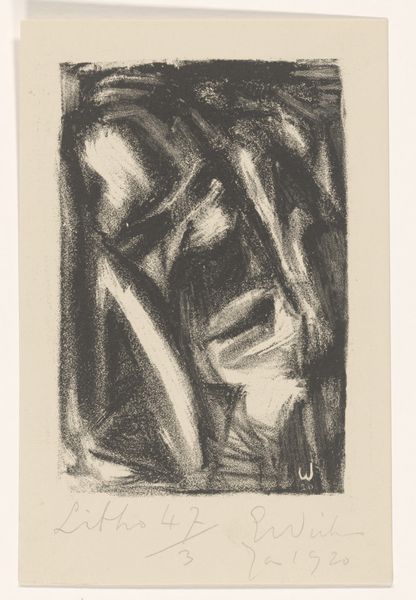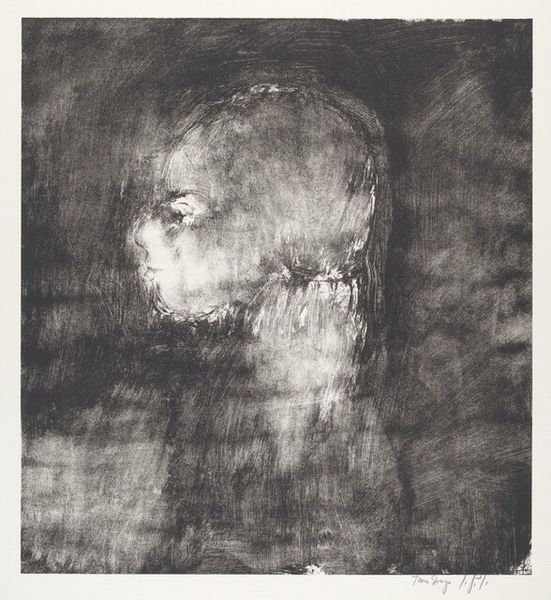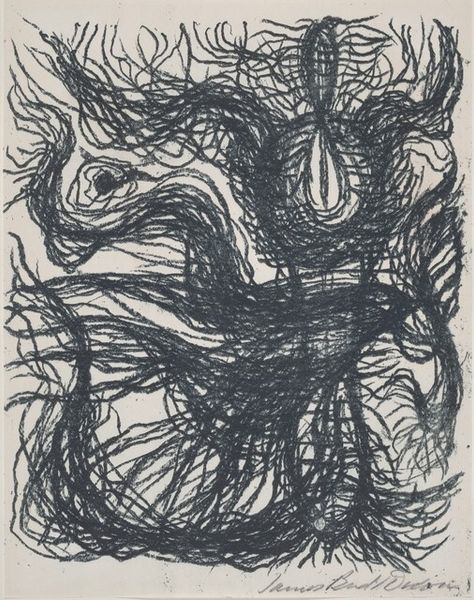
drawing, pencil
#
pencil drawn
#
drawing
#
form
#
pencil drawing
#
pencil
#
expressionism
#
abstract-art
#
line
Dimensions: height 349 mm, width 292 mm
Copyright: Rijks Museum: Open Domain
Editor: This is Valentijn Edgar Van Uytvanck's "Abstracte compositie" from 1918, made with pencil on paper. It feels so turbulent, almost violent, yet there’s also something captivating about the swirling forms. How do you interpret this work? Curator: Looking at the turmoil in 1918, during and after the First World War, I wonder if we can view this drawing as a reaction to widespread social and political unrest? Think of Expressionism and its relationship to inner experience. Can you see in the spiraling vortex the way the artist communicates their psychological state of the world, a world being turned upside down? What comes to mind when you consider this form against the backdrop of immense human suffering and societal upheaval? Editor: It’s almost like the center is a drain, sucking everything down. Maybe the artist felt helpless? Were other artists exploring similar themes? Curator: Absolutely. The Expressionists as well as artists associated with the Dada movement questioned established values and norms, challenging the structures that led to the war in the first place. It reflects a radical break with tradition. Considering gender, can we also ask if societal constraints led the artist to seek freedom of expression in abstraction, where perhaps traditional biases played less of a role? What do you make of the lack of any explicitly representational figures? Editor: I hadn’t thought about it that way, but the abstraction allows it to be universal. It's not one person's struggle; it is everyone's. Thanks! Curator: Precisely. And considering Van Uytvanck’s biography, we can go on and explore themes of national identity in times of war…There’s so much we can uncover.
Comments
No comments
Be the first to comment and join the conversation on the ultimate creative platform.
